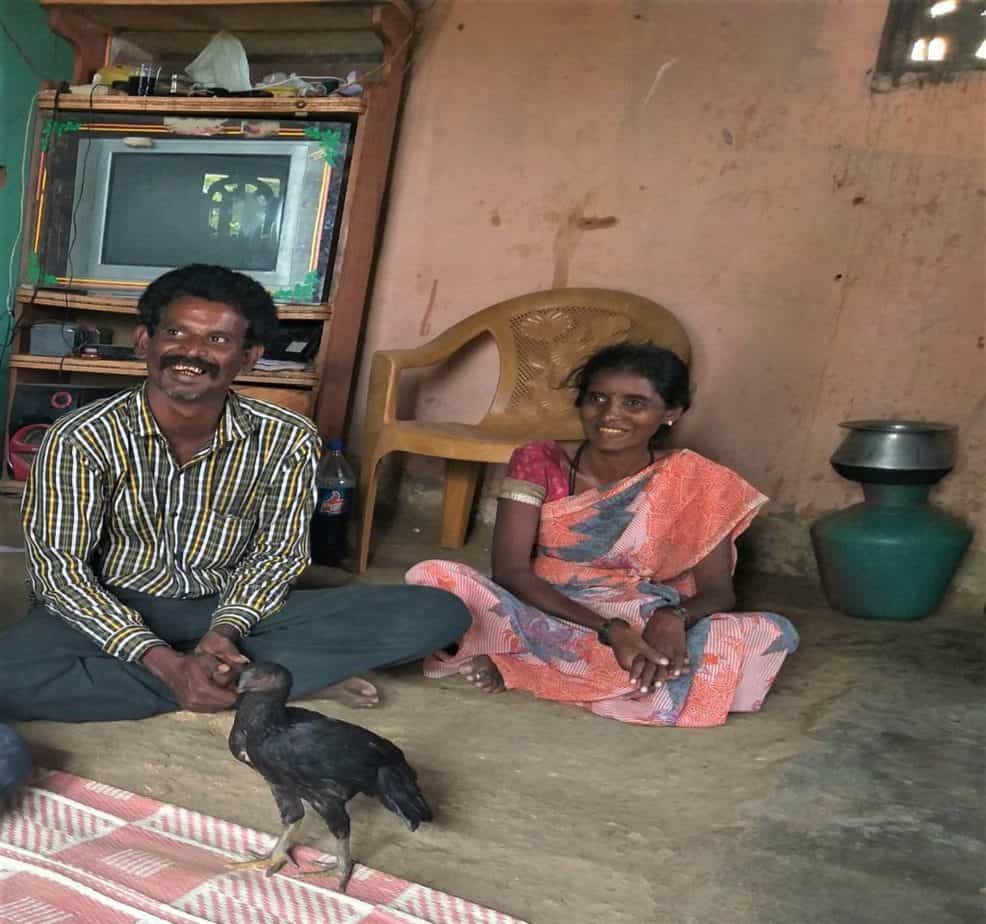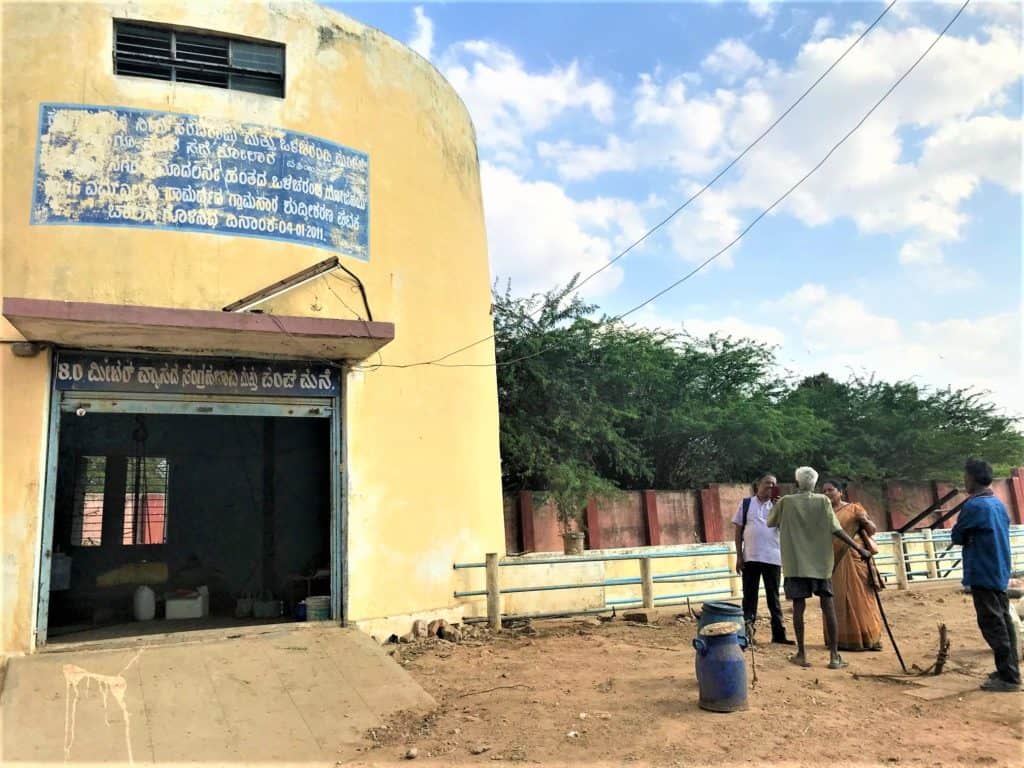In my lifetime, I’ve transitioned from an Indian-type squat-pour-flush toilet to a more spacious western-style commode toilet with the luxuries of a mirror and wash-basin. This transition is one of the more eloquent symbols of my upward mobility.
It was in the privacy of the toilet that I have felt the most free and uninhibited. It is the place where my deepest angsts have found their release in helpless tears and the place where I’ve imagined my wild aspirations coming true. It is where I’ve thought of the comeback line to the school bully and where I’ve pretended to be a singing star!
And yet, despite my intimacy with this space, I had never thought of what happens after I flush. I had never thought that after I flushed, my excrement in its journey down-the-drain (and out of it), wove and got woven into a thousand other stories of aspirations and anxieties.
Like the story of Narayanaswamy in Bethamangala, who used to be locally known as “Pit Narayana” because he manually emptied toilet pits for a living.

Over the last three years, Pit Narayana has reinvented himself as “Steel Narayana,” selling utensils in neighbouring villages and freeing himself from the shackles of manual scavenging, an occupation which was his only inheritance. His daughter is not ashamed to talk about her parents anymore, and she is more confident in school.
Or like the story of Muniraju, a small farmer on the outskirts of Vijayapura town. He was in trouble because his wells and borewells had completely dried up. It pushed him to learn how to reuse the sewage that flowed out of the town in his farm, to grow silk. It was this nimbleness that helped him put his son through college.
Our excrement, our waste, and how we deal with it holds a mirror to ourselves – a more honest mirror than the one that hangs in our toilets. It’s our willingness to look into this mirror that will determine how we will deal with some of our most important civilisational challenges today, which are primarily social and ecological. For this, we need to follow the pipes that come out of our toilets – to the pits, the septic tanks, the sewage treatment plants, the lakes, rivers, and the lands on which they empty themselves. And listen to the thousand revelatory stories along the way.
Waste transforms in different ways in Bengaluru
In Bengaluru, for example, there is a diversity of ways people’s waste travels and transforms.
Some sewage is treated in public STPs
For those connected to the utility BWSSB (Bangalore Water Supply and Sewerage Board), their waste – when it doesn’t leak from the pipes – goes to “public” Sewage Treatment Plants or STPs.

Take, for example, waste from the homes in Yelahanka New Town. It is brought to the STP at Jakkur (a plant with 10 million litres a day or MLD capacity, recently upgraded to 15 MLD), one of the finer STPs in the city.
Once treated at the STP, the wastewater is released into the Jakkur lake through an artificial wetland constructed on the northern part of the lake. The sludge from the STP gets transported in trucks to farmers in districts around Bengaluru, providing a livelihood to those who deliver it and those who use it.
The wetland makes the lake resilient; it improves the water quality and creates a vibrant ecosystem where insects, birds and reptiles can thrive. While the wetland is a source of fodder for cattle herders and grazers, the lake is a habitat for fisherfolk to culture and harvest fish.
The lake-plus-wetland is also a favourite hangout for urban wildlife enthusiasts. It encourages quiet spiritual contemplation in the midst of a concrete jungle. The community around the lake comes together to take care of it and engages with governance institutions to ensure the same.
Private STPs in residential communities
In the last three decades, as Bengaluru grew into its Silicon Valley identity, more and more people came and made the city their home. The city grew exponentially, with all forms of group housing mushrooming across the then-outskirts. These ‘outskirts’ are now among the city’s most densely-populated pockets.
The growth was so rapid that the city’s utilities could not keep up and build the necessary infrastructure. So, many of the ‘gated layouts’ and apartments built their own private set of pipes and STPs – individually smaller than the public STPs, but far more in number.
Most residential communities struggle with managing their water and wastewater, often discharging untreated waste into stormwater drains. A few, though, have persevered to make responsible and sustainable choices and investments.
There is the story of a Rainbow Drive, which converted its park into a ‘root-zone based’ STP. The community reuses its wastewater within the layout for all its gardening needs. There is also the story of TZED-homes, where one of its residents (himself an STP technologist) worked with his neighbours to convert their wastewater into drinking water. These stories inspire many in the city. They need to inspire the city’s governance institutions a bit more.
Waste in pits/septic tanks are often transported to farms
Then there are those who are neither connected to the BWSSB’s pipes nor have their own STPs. They defecate into pits or septic tanks, which also need to be emptied. Specially built vacuum-trucks or ‘honey-suckers,’ suck the waste up for a fee and many of these honeysuckers deliver the waste to farms on the outskirts of the city.
Honeysucker drivers work closely with farmers who use the waste and the wastewater to irrigate and fertilise their crops, because, much like Muniraju from Vijayapura, they know this is not ‘waste.’ They have figured out which crops are safe to grow and which grow well with this waste. “Just don’t give us acid,” they tell the honeysuckers, to make sure they do not receive industrial wastewater.
Residents without access to toilets
And finally, there are those who do not even have access to a toilet. This diversity of infrastructure – or the lack of it – is a reflection of the asymmetries of the city’s growth, both socio-economic and geographic. These asymmetries are also reflected in the conditions of ‘labour’ that operate and maintain our waste infrastructure.
Let’s not externalise the costs of our waste
When the system breaks down, or is clogged and needs emptying and cleaning, we casually send our fellow human beings down into our excrement to unclog it. India’s Silicon Valley would probably drown in its own excrement if it weren’t for them. And India’s historical social structure has been the foundation on which such an inhuman ‘labour class’ has been built.
It is in the understanding and retelling of these stories that we should expend our energies. We should retell the stories in many ways, reflecting what we’ve learnt from them in new ideas and designs that we create and implement. And we should help others adopt these new ideas and engage with governments to develop policies that reflect these learnings.
We should create and dwell in homes that treat and reuse solid waste and wastewater within its boundaries, so that we do not socially or ecologically externalise the damaging costs of our waste. We should strive to create and be part of communities like ‘Rainbow Drive’ that take their ecological and social responsibilities seriously, and we should catalyse its replication.
We should work with institutions of governance, and help them remember that finally, sanitation is not about infrastructure, but about protecting our health and that of our environment. Infrastructure is just a means to this end.
We should acknowledge that sanitation workers, farmers, communities, and health workers are all stakeholders in our wastes’ journey. We should listen to everyone’s stories and develop solutions collectively. This approach identifies where our health risks lie, who is exposed to them, and builds risk barriers to protect those exposed – making us realise that investing in our sanitation workers’ health is so important for our health.
Our current COVID-19 pandemic has only made this obvious. It helps us realise that sanitation and the journey of our waste are intertwined with many a livelihood and our infrastructure solutions need to integrate these livelihoods.
Perhaps the most difficult but most important retelling is Pit Narayana’s story, of how he has been able to change his identity to Steel Narayana. How do we work together to ensure that this story is not an exception, but one that empowers every manual scavenger or waste worker to choose their own path?
This past decade has been the decade of the ‘Swacch Bharat Abhiyan’. The Abhiyan proclaims what Mahatma Gandhi once said, “Sanitation is more important than independence.” In the context of our complex society, I imagine Dr Ambedkar questioning Gandhi – “Whose sanitation are you talking about? Whose independence, and from what?”
[Disclaimer: This article is a citizen contribution. The views expressed here are those of the individual writer(s) and do not reflect the position of Citizen Matters.]
Thank you for this article
Enlightening article. Sanitation is the hottest topic of our times on account of burgeoning materialism we are into. Felt very bad when educated and moneyed people throw wastes on roadsides and elsewhere although persons designated are collecting from their gates.